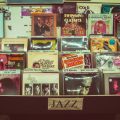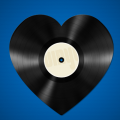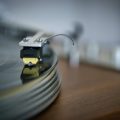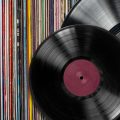Are you looking to start DJing but do not know where to turn? Perhaps you are already a DJ, but you wish to start vinyl DJing properly? Where might you look for some of the essential tips?
Look no further than us here as we explore 5 top tips for getting started with vinyl DJing.
Table of Contents
- Step 1: Building Up a Catalog
- Step 2: Cueing In
- Step 3: Pitch Control
- Step 4: Crossfader, EQ, and Transitioning
- Step 5: Practice Vinyl Djing
- Final Tones
- FAQs Vinyl DJing
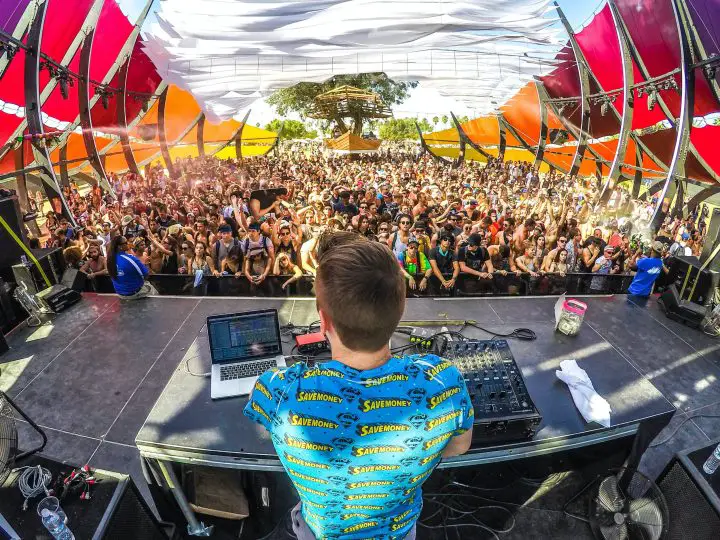
Step 1: Building Up a Catalog
Before you even think about trying to learn some fancy DJ software alongside using your vinyl turntables – even before you spin any discs – you need to accrue a collection of tunes that you love and that you would be proud to spin. Remember, the plural of vinyl is not vinyls – it is just vinyl. Bearing this in mind will save you a lot of grievous bodily harm in the world of audiophilia.
If you are just starting, try just picking a bunch of different songs that you like and try to find the similarities between each of them. In this way, you can begin to curate them into an order that broadly takes the audience on a journey of sorts. The more adept you get at this, the bigger your gigs will likely be. They do not necessarily have to be in the same genre.
Some DJs tend to play specific types of vinyl records. A funk gig will often hire a DJ who specializes in funk music to fill out the space between the bands’ sets. Likewise, a techno DJ like Jeff Mills will specialize in, you guessed it, techno.
Step 2: Cueing In
Now that you have got a bunch of different records that broadly fit under the same sort of theme (or that you know well enough to sculpt into something entirely new), you can effectively begin your DJ career.
General advice would suggest that you cue up a record by focusing on the initial beat and where that comes in. If there is not a strong kick drum or otherwise effective beat at the beginning of a record then skip forward to the part of the record where there is. This is the part where digital DJing starts to seem rather alluring, with its ability to beat match allowing a vinyl DJ to DJ digitally.
Indeed, beat matching can be a whole bunch of fun, but stay focused! Try practicing cueing up records on your DJ turntables regularly. You can do this by letting one vinyl record play while holding the other in place, moving it forward and backward to achieve the correct starting point. Once you are ready, you release the track and let it play, attempting to align the beats on each record as best you can.
This is especially good practice for hip-hop and other electronic music where there is a strong and often unavoidable beat to take into account.
Step 3: Pitch Control
Once you feel comfortable cueing up your first beat, you can now begin to think about beat matching. This is an incredibly important part of the process, especially for digital music that has been made with a driving and repetitive beat in mind.
There are two methods you might use to go about doing this:
- This method involves getting two music tracks matched in terms of their beats so that they are synced up together and play in time with one another. Anyone who knows spinning vinyl knows how irksome this can be.
- This method more focuses on making minor adjustments to the track once it has been cued in, either with the pitch control feature and/or by adjusting the platter manually with your fingers.
Very often, you may use both of these methods in tandem in the DJ booth. In turntable DJing, you might feel like you have cued up a song to play at the right tempo with another but then realize that it requires some fine-tuning when it is spinning. This is the kind of nuance that you can’t rely on your DJ mixer for help with!
Step 4: Crossfader, EQ, and Transitioning
One of the last things you will need to learn in your journey is how to use the DJ mixer. It is not worth attempting to do so before this point – your efforts are much better spent focusing on properly guiding the decks and the records together in tandem.
The crossfader part of the mixer essentially allows you to smoothly switch over between the audio of each of the turntables without any jarring or offputting effects to the listener. Using such a feature is crucial for mixing tracks together and beat matching in front of an audience – in such an instance, you will not want the crowd to hear you trying to find the sweet spot, after all.
The EQ part of the mixer is where most of the fine-tuning will happen. Here, you can play with the equalizer and make the records sound better together. Music is not all made by the same person, nor is it mastered or pressed in the same place, so they are inherently going to sound different. This function, thus, allows you to cut away any frequencies between the two discs playing that might otherwise muddy or clash during the mixing process.
Step 5: Practice Vinyl Djing
Here is the part you probably are not going to take to so much, where you practice for hours and hours each day to no one in particular until you are good enough to play before a crowd of people.
More than learning how to pitch shift or spending a bunch of time at your local record store, drilling in the practice at this stage is going to do you a world of good. This is, after all, an inherently difficult hobby to be following. In this way, studying and patient practice is one of the key parts of the process, hence why it occupies its own step in this diorama.
This includes listening out for new music and expanding your vinyl collection on a regular basis, always keeping the mix in your mind with the eventual aim of involving new music in your sets. For this to be an art form, then it needs to be taken seriously. Some DJs like Jeff Mills even eschew the use of two tracks to use three, sometimes even involving a fourth CD deck on the side.
Final Tones
So, there you have it! Hopefully, you are now feeling ready and able to make your start in the world of vinyl DJing, equipped with a sufficient head start to get the jump on your compatriots.
FAQs Vinyl DJing
Can you DJ with vinyl?
Indeed you can. This is in fact how DJs have almost always done it, at least before digital technology got involved in the last 20 years. Even in the fact of ever-burgeoning digital technology, many DJs have chosen to stick to doing their job on vinyl for various reasons. So, yes, you can DJ with vinyl, and many DJs make it a point of priority and pride to continue doing so in the face of ever-more sophisticated recording technology.
Is it harder to DJ with vinyl?
There is much contention and debate over this, especially as digital technology has a bigger presence in audiophile and turntablism circles than ever before. It does seem that, contrary to the beliefs of some, vinyl DJing is more difficult than DJing with a digital workstation, even if only because of the fact that you are dealing with something physical. Since it is a physical and corporeal thing, there is a chance that something could go wrong. At the very least, you need to use your sense of touch more pointedly with vinyl DJing.
Why do DJs use vinyl?
DJs still use vinyl for several reasons. For some, their reasoning behind using vinyl in the face of ever-more sophisticated digital technology is little more than sentimental, affording them a way of flying in the face of such digital technology before it slowly consumes all of us in its bottomless pit. Some DJs, though, make a point of emphasizing just how much they prefer the sound of vinyl. It is, after all, where DJing came from in the first place, offering warm sound and a physical format to play with. Everything else is just an extension of this original play with wax.
When did DJs stop using vinyl?
Contrary to popular belief, DJs have never really stopped using vinyl, just as vinyl never really died. Sure, there have been points in the history of vinyl recording technology where it has diminished in popularity, just as there have been points where DJs have gravitated more toward new digital technology. However, there has always been a dedicated and stubborn sect of a society dedicated to audiophilia in all its vinyl forms. This vinyl revival has simply meant that a larger majority of people are thinking about vinyl, if not collecting it for themselves.
What are vinyl DJs called?
Vinyl DJs are just called DJs. In fact, it would not be all that surprising if they were in some way offended by being held at arm’s length and called a vinyl DJ. This phrase suggests that not only are vinyl DJs other than so-called regular DJs but there is also an element that suggests that vinyl DJing is only a fad that will soon pass. In reality, vinyl DJing never died, just as vinyl never died – vinyl DJing is where it all started, so do not go separating them too fast before you know the facts of the matter.

